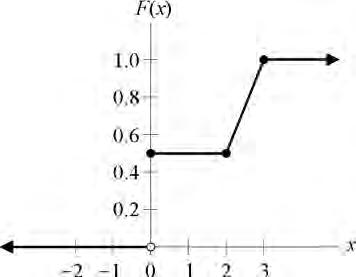The loss due to a fire in a commercial building is modeled by a random variable [math]X[/math] with density function
Given that a fire loss exceeds 8, calculate the probability that it exceeds 16.
- 1/25
- 1/9
- 1/8
- 1/3
- 3/7
A group insurance policy covers the medical claims of the employees of a small company. The value, [math]V[/math], of the claims made in one year is described by [math]V = 100,000Y[/math] where [math]Y[/math] is a random variable with density function
where [math]k[/math] is a constant. Calculate the conditional probability that [math]V[/math] exceeds 40,000, given that [math]V[/math] exceeds 10,000.
- 0.08
- 0.13
- 0.17
- 0.20
- 0.51
An insurance policy pays for a random loss [math]X[/math] subject to a deductible of [math]C[/math], where [math]0 \lt C \lt 1[/math] . The loss amount is modeled as a continuous random variable with density function
Given a random loss [math]X[/math], the probability that the insurance payment is less than 0.5 is equal to 0.64. Calculate [math]C[/math].
- 0.1
- 0.3
- 0.4
- 0.6
- 0.8
An insurance policy pays 100 per day for up to three days of hospitalization and 50 per day for each day of hospitalization thereafter. The number of days of hospitalization, [math]X[/math], is a discrete random variable with probability function
Determine the expected payment for hospitalization under this policy.
- 123
- 210
- 220
- 270
- 367
An auto insurance company insures an automobile worth 15,000 for one year under a policy with a 1,000 deductible. During the policy year there is a 0.04 chance of partial damage to the car and a 0.02 chance of a total loss of the car. If there is partial damage to the car, the amount [math]X[/math] of damage (in thousands) follows a distribution with density function
Calculate the expected claim payment.
- 320
- 328
- 352
- 380
- 540
An insurer's annual weather-related loss, [math]X[/math], is a random variable with density function
Calculate the difference between the 30th and 70th percentiles of [math]X[/math].
- 35
- 93
- 124
- 231
- 298
A man purchases a life insurance policy on his 40th birthday. The policy will pay 5000 if he dies before his 50th birthday and will pay 0 otherwise. The length of lifetime, in years from birth, of a male born the same year as the insured has the cumulative distribution function
Calculate the expected payment under this policy.
- 333
- 348
- 421
- 549
- 574
Damages to a car in a crash are modeled by a random variable with density function
where [math]c[/math] is a constant. A particular car is insured with a deductible of 2. This car was involved in a crash with resulting damages in excess of the deductible.
Calculate the probability that the damages exceeded 10.
- 0.12
- 0.16
- 0.20
- 0.26
- 0.78
The distribution of the size of claims paid under an insurance policy has probability density function
Where [math]a \gt 0[/math] and [math]c \gt 0 [/math]. For a randomly selected claim, the probability that the size of the claim is less than 3.75 is 0.4871.
Calculate the probability that the size of a randomly selected claim is greater than 4.
- 0.404
- 0.428
- 0.500
- 0.572
- 0.596
